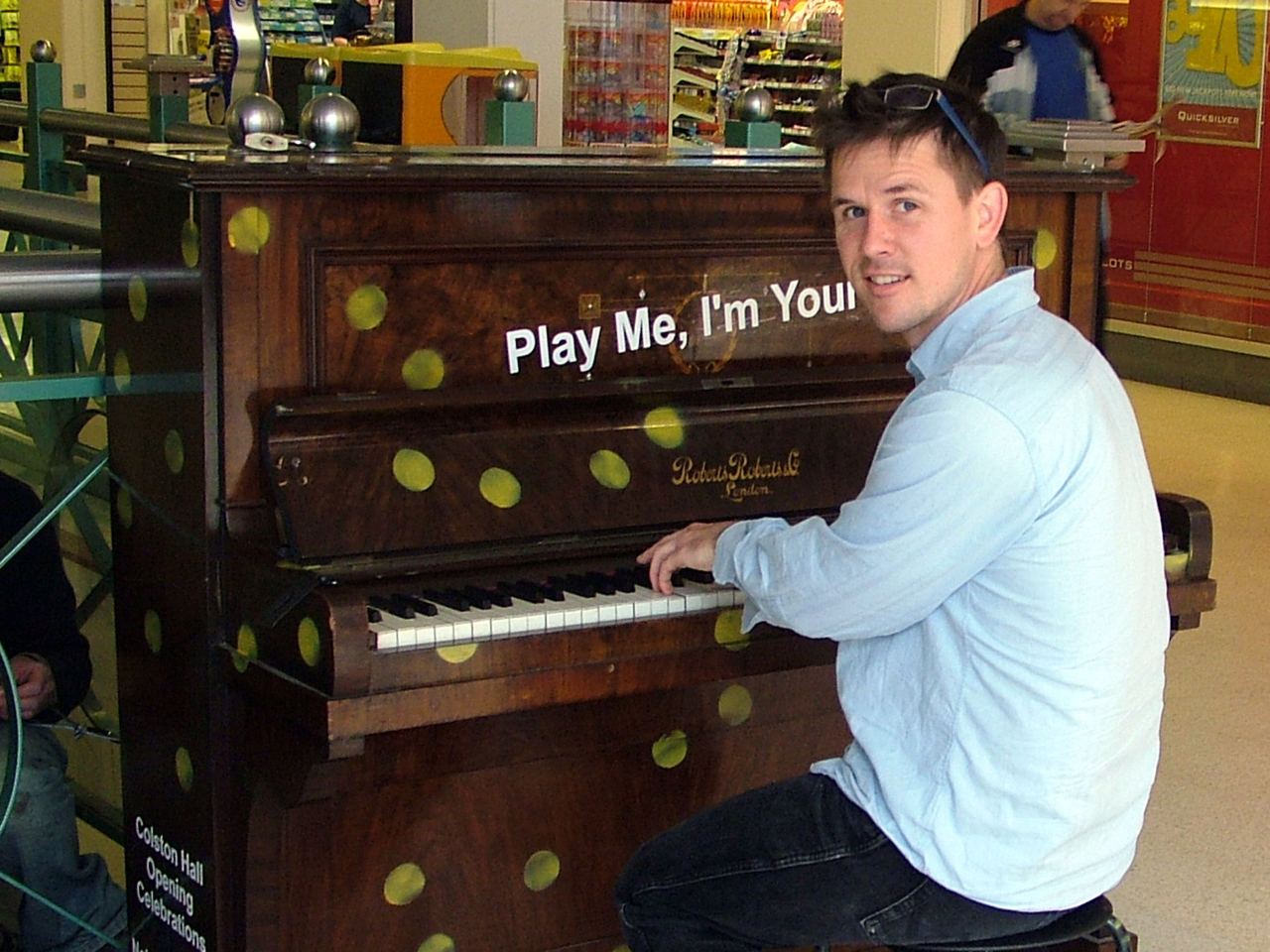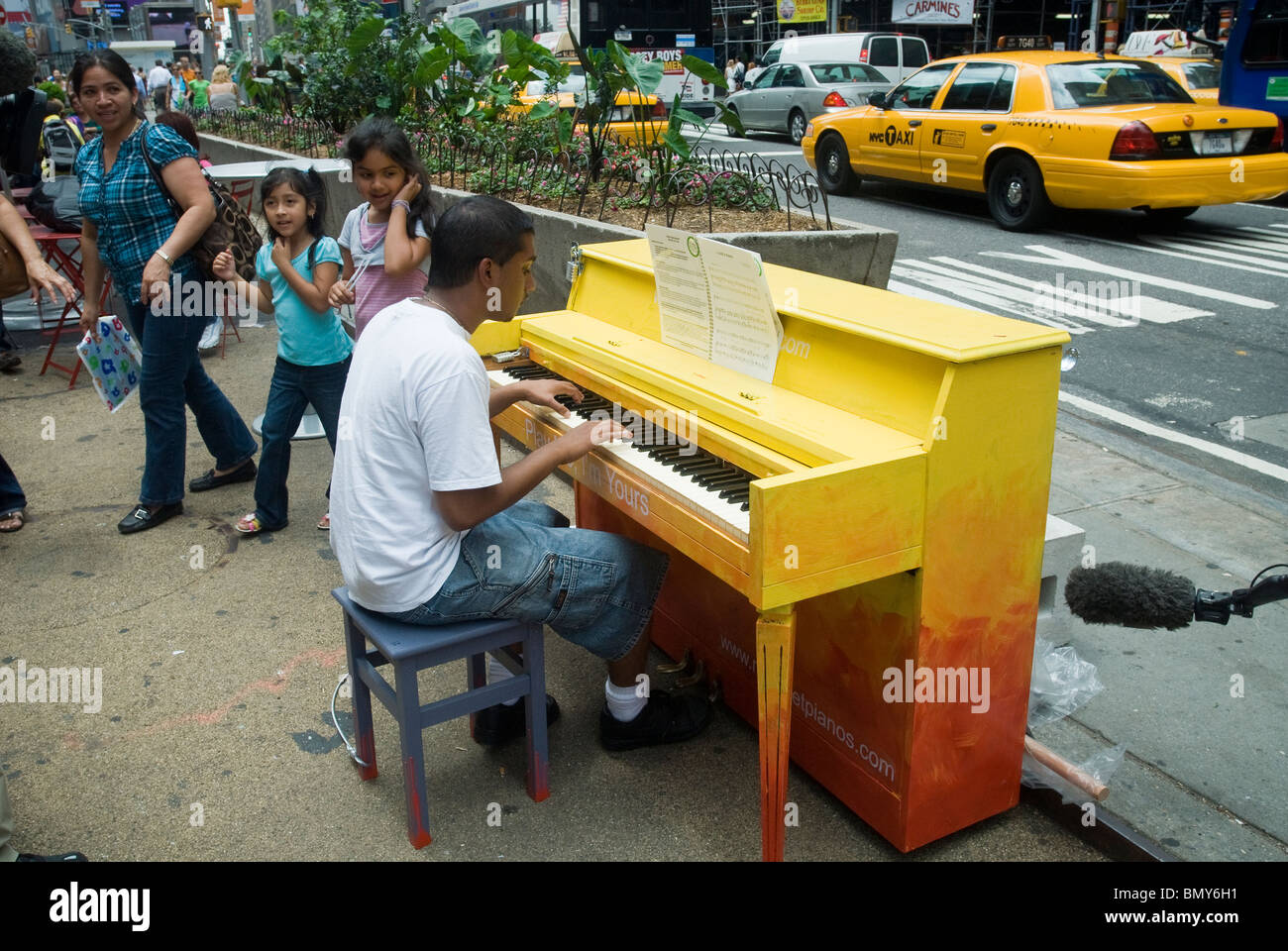What/Who is Jane Johnson?
She is a TV reporter
What was Luke Jerram's project called?
Play Me, I'm Yours
Where was Luke Jerram visiting when his idea was first born?
A local laundromat
What is this? __________ ___________
Street piano
結婚する
Marry/married
What does the lady, who Jane interviews, love?
She loves the audience and the interaction among various people.
Who spread the idea of ‘street pianos’ all over the world?
A British artist called Luke Jerram.
What does Luke Jerram think that the project is a form of?
Public art
Who is this?

Luke Jerram
設置する
Install(ed)
Why are the beautiful pianos in Kunitachi?
Because they are street pianos. You can touch and play them. You can now find them all over the world
What happened to some people who met at a piano?
They fell in love and married
What did he think placing a piano at the laundromat would do?
It may break the silence and lead to conversation among them
What is she?
TV (News) Reporter
見知らぬ人
Stranger
Look at all those people. They are playing music, singing or dancing.
Why are these beautiful pianos here? Because they are street pianos. You can touch them and play them. You can find them all over the world.
What is 'them'?
Street pianos
He and his team installed over 2,000 street pianos in over 65 cities across the globe. Their project is called play me I'm yours. It started in 2008. According to Mr Jerram, some people met at a piano, fell in love and married.
Who does 'their' mean?
Luke Jerram and his team.
The idea was first born when I visited a laundromat. Customers were spending time in silence. Placing a piano here may break the silence and lead to conversation among them.
Who does 'them' mean?
Customers
Where is this?

Laundromat
つながった
Connect(ed)
ジョン先生についての文を作ってください Create a sentence about Jon sensei using the grammar rule
助動詞+動詞の原形 「・・・できる」「・・・すべきだ」 「・・・に違いない」などの意味を表します。
<Auxiliary verb + base form of a verb) shows the meaning of 「・・・できる」「・・・すべきだ」「・・・に違いない」
Jon sensei _______ _________ _______________________________________
ジョン先生についての文を作ってください - Create a sentence about Jon sensei using the grammar rule.
受け身 〈be動詞+過去分詞〉で「・・・されている [された]」という意味を表します。
Passive voice: (be + past participle) shows the meaning of 「・・・されている [された]」。
Jon sensei is/was ________ __________________________________________
ジョン先生についての文を作ってください - create a sentence about Jon sensei using the grammar rule.
S+V[be動詞以外] + C look, feel などが「・・・に見える」 「・・・の感じがする」などの意味を表し、 S+V+CのVとして働きます。
<S+V[other than be]+C): "look," "feel," etc. have meanings such as 「・・・に見える」 「・・・の感じがする」 and work like the V in (S + V + C.).
Jon sensei ___________ __________________
Can you name the famous city?

New York
恋をする
Fall in love